Johann Nejedly Tarok Cards
Johann Nejedly, a 19th-century Viennese card maker, produced Tarock cards featuring modern scenes that reflect the artistic and cultural trends of the time.
Johann Nejedly, a card manufacturer, is documented in the formerly independent village of Ottakring, which has been part of Vienna since 1892. The surname Nejedly suggests Czech origins, as “Nejedlý” translates to “inedible” in English. In 1862, Johann Nejedly obtained a license to produce cards, with the last known pack dating from 1896. The company offered a wide range of products and underwent dynamic technological development typical of the second half of the 19th century. Among the common products of this period are tarock cards of the “Industrie und Glück” type, which exhibit several distinctive features that set them apart from typical productions of the time.
The design of some tarock cards in this deck can be described as an alternative variant of the Austrian tarock, Type B, according to the standard of The International Playing-Card Society. However, some cards depict atypical, often modern, period scenes.
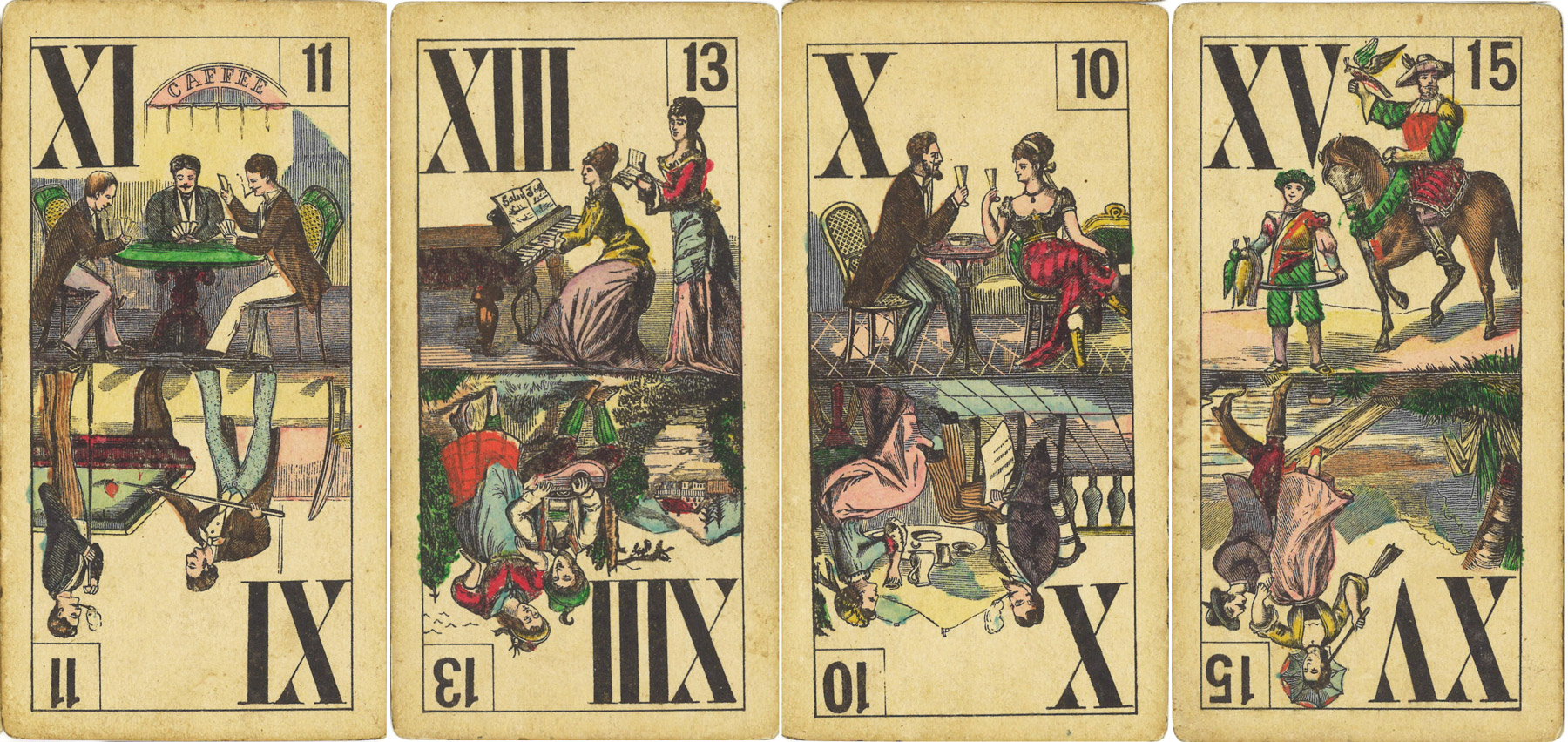
These tarock cards are also marked with Arabic numerals in the upper right corner.
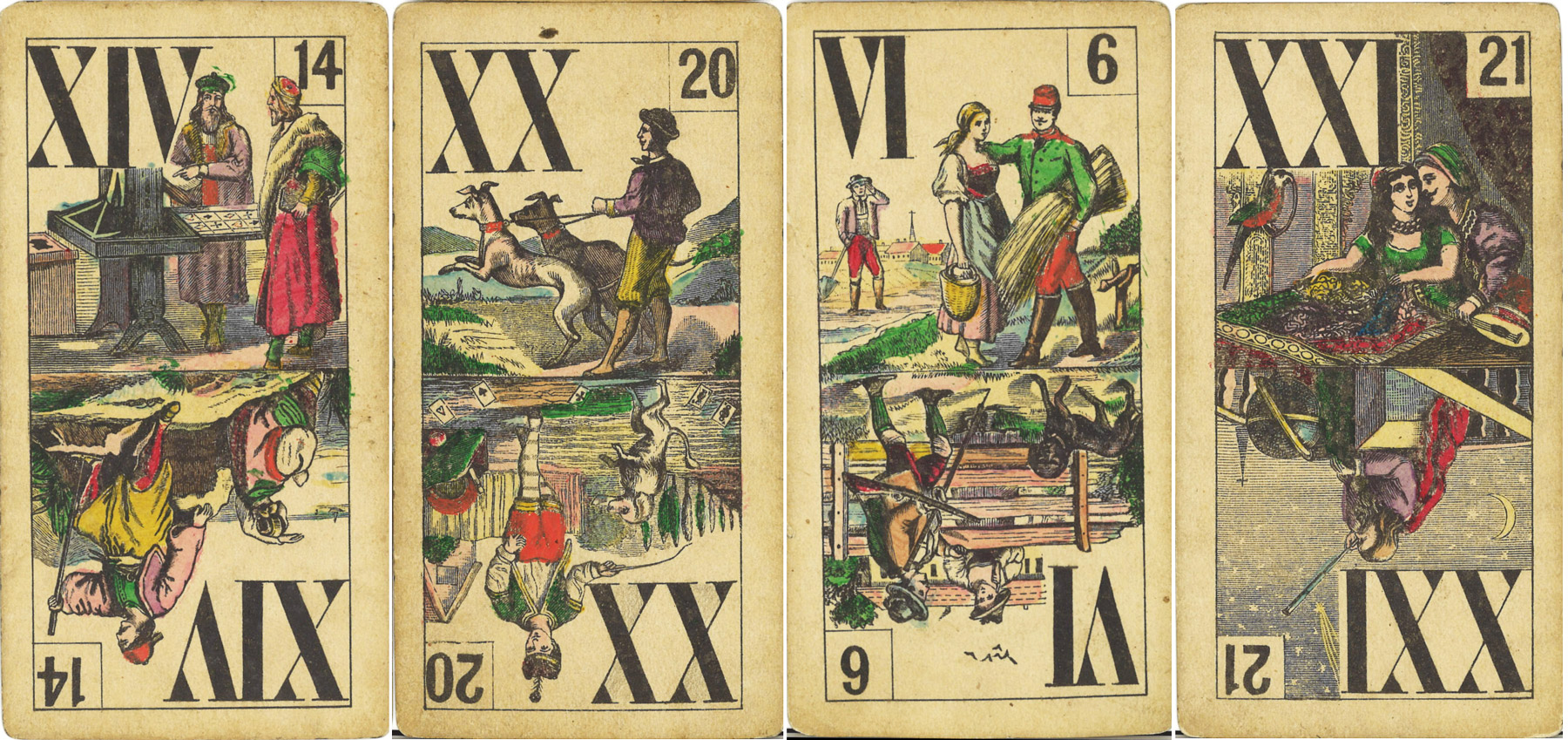
Notably, the design of the tarock card with the value II features a double-headed eagle, referencing the heraldic emblem of the Austro-Hungarian Empire. This can be interpreted as a political statement, a rarity in contemporary production.
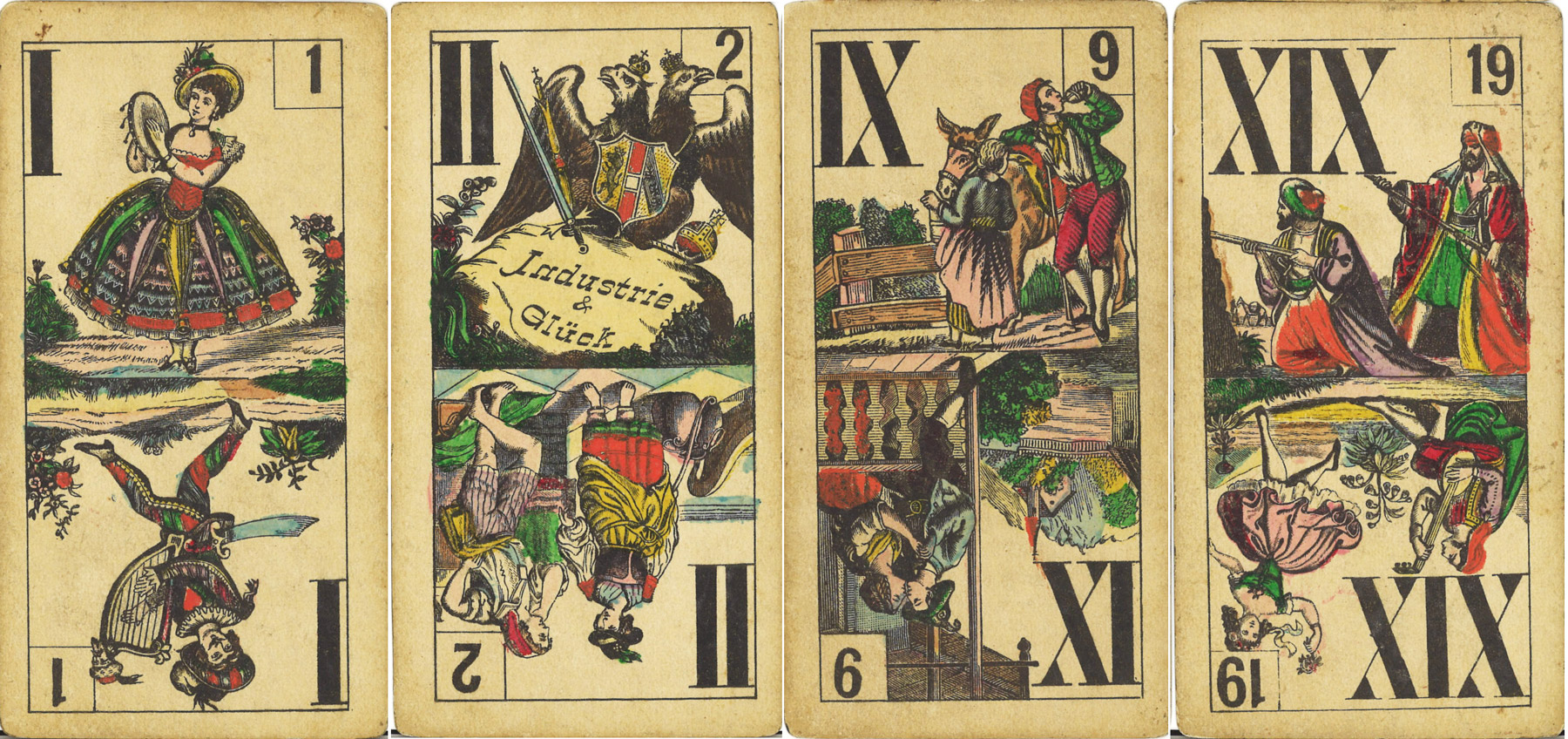
Similar corner indices, with only a color indication, are also present on all court cards.
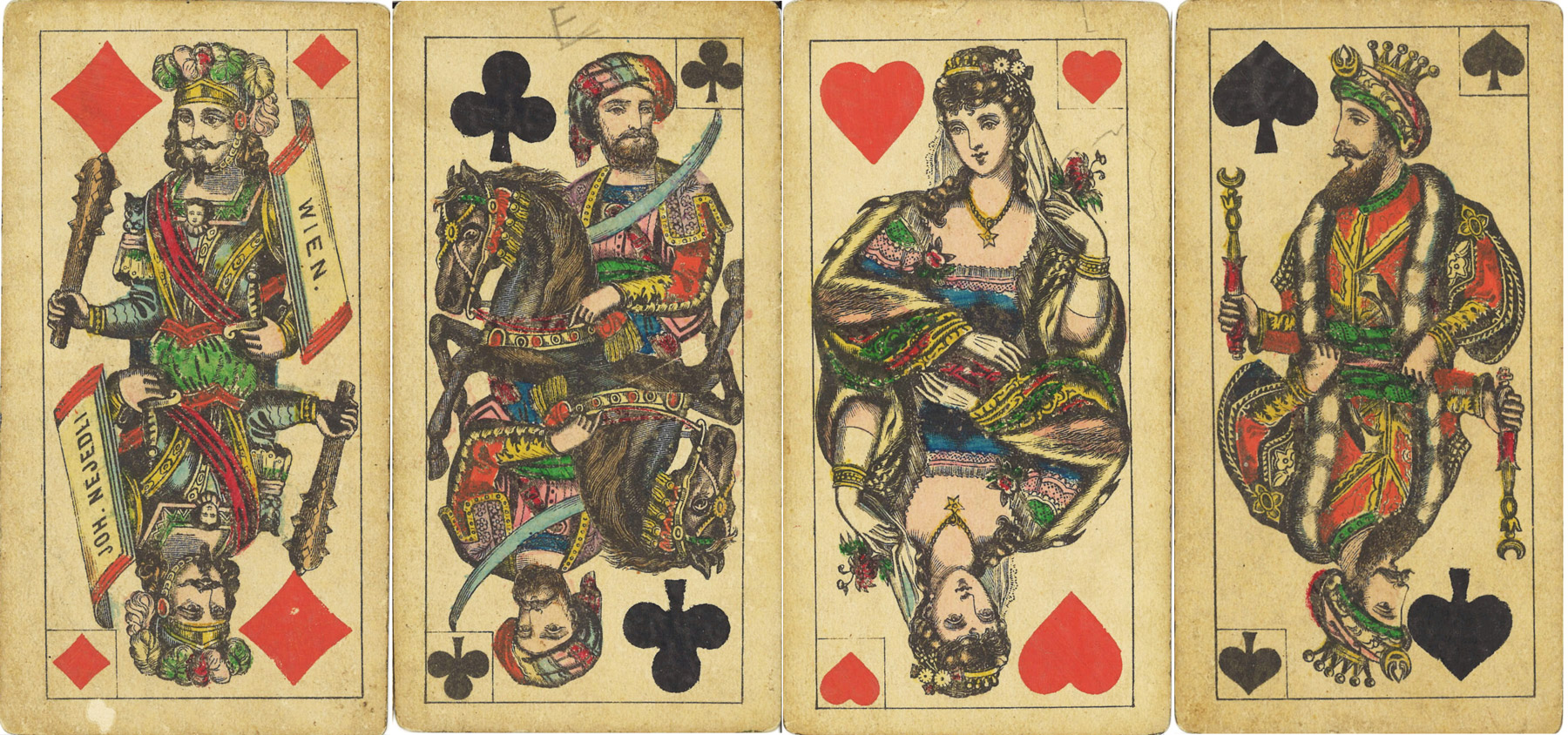
Based on the combination of the tax stamp and the company address on the heart card with a value of one, the deck of cards can be dated between 1882 and 1890.
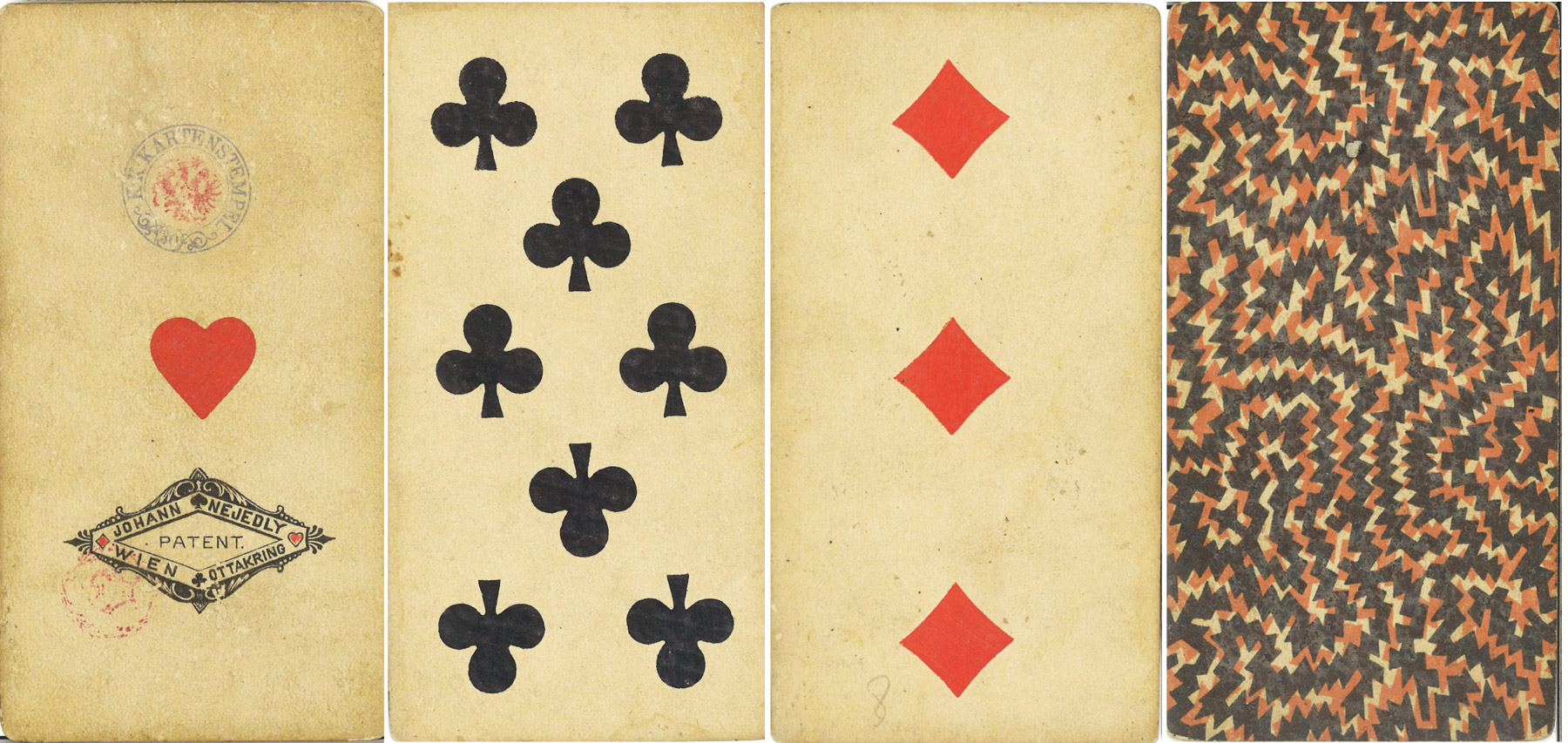
It remains uncertain whether the “PATENT” text on this card refers to the use of corner indices, the inherent graphics of the tarock cards, or if it is simply standard period text.
References

By Marek Brejcha
Member since June 13, 2024
My relationship with cards grew from playing to collecting and transformed into publishing as well. I am part of the team at Counter Clockwise, a small company that publishes traditional card games.
Related Articles

Luditz Pattern by Georg Geiselreiter
The discovery of 2024 changes the current state of knowledge of the history of this pattern.

Austrian Tarock by S.D. Modiano
Modiano’s Austrian Tarock with country scenes has been in production for over 100 years.

Songs with Flute accompaniment
Eighteenth century English engraved cards with music for voice and flute.

Ukraine playing cards
Historical figures from Ukraine’s past in a familiar Piatnik style.

MITSCHKAtzen
Clever cat designs by the Austrian artist and illustrator Willi Mitschka.

Tarock Cards by NIL Spielkartenfabrik
A deck of tarock cards from the eastern end of the ending Austro-Hungarian Empire.

Whist by Ditha Moser
Ditha Moser created this minimalist Whist deck in 1905, in the style of the Vienna Secession art mov...

Alan Tarot Deck
Reprint of a Tarock pack originally designed by Argio Orell for the Austrian Lloyd shipping company....

Gabriel Uffenheimer
Rare example of the production of Johann Gabriel Uffenheimer, Guntramsdorf, 1825.

Dr Sacheverell
Dr. Henry Sacheverell's impeachment in 1710 sparked widespread public unrest and political upheaval,...

Art pack I
Art pack featuring Old Masters, including Bruegel, Vermeer, Titian, Raphael, Caravaggio, Canaletto, ...

Karl Korab
Austrian artist Karl Korab’s first pack, displaying his use of different techniques.

Jeu de Tarot (Catel & Farcy)
Colourful version of a standard French (‘Bourgeois’) Tarot.

Johann Nejedly Tarok Cards
Johann Nejedly, a 19th-century Viennese card maker, produced Tarock cards featuring modern scenes th...

Austria Ski Team playing cards
Photos of members of the Austrian skiing team replace the normal courts on two different packs.

Grunwald 1410 – The Battle of Tannenberg
Details from the famous painting of the Battle of Grunwald (1410) by the Polish painter Jan Matejko....
Most Popular
Our top articles from the past 28 days

